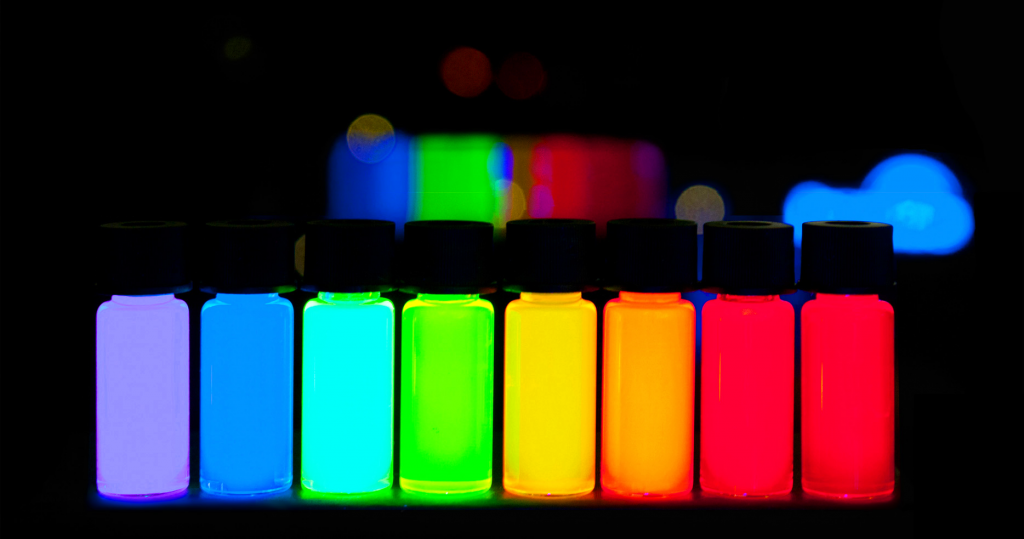What is the first image that comes to mind when you think of “quantum dot”, or quantum dots? Is it the screen of an expensive television, a semiconductor material for solar cells, or the chips of the future in quantum computers?
It is a fact that the application of quantum dots does not stop only in the field of electronics. These nanoparticles are also useful in the field of cell biology, of which the following luminous silkworms are an example:
This is a quantum silkworm, it eats “quantum dot” and releases luminescent silk
These luminous silkworms are the product of a team of Chinese scientists, working at Fudan University, Shanghai. They work like a solar lamp.
As long as you leave these silkworms out in the light, light energy will be stored in them. So that when entering the dark, the silkworms will glow brightly like a lantern.
And not only the silkworms themselves glow, their cocoons, pupae, and silk also glow. Even if the silkworm grows into a moth, that butterfly will glow. The eggs that the butterfly lays later also glow. But the next generation that hatched from those eggs did not.
But why is that?
To be able to create these silkworms, he and his team fed them quantum carbon dots, said Huan-Ming Xiong, a chemistry professor at Fudan University.

Specifically, they extracted carbon from mulberry leaves, the food of silkworms, and made quantum dots from that carbon. Quantum dots are semiconductor particles that are only a few nanometers in size (1nm is 1 millionth of a millimeter). At this size, they are already so small that they exhibit properties of the quantum world.
One of them is the ability to be stimulated by light. When light hits a quantum particle, it pushes the electron of that particle to a higher state, accumulating energy.
So that when this electron degrades, it will discharge energy in the form of light, thereby leading to luminescence. And you can adjust the color of this emitted light, depending on the material and size of the semiconductor particle that makes up the quantum dot.
Here in their study, Professor Xiong and colleagues chose carbon particles. He tested hundreds of different quantum dimensions of it, and selected the quantum dot that emits red light.
“Since silkworms love to eat mulberry leaves, we made carbon dots from mulberry leaves to make them glow red“, he said.
In the past, other scientists have also created glowing silkworms. But they mostly do it through gene-editing technology. Gene editing is expensive, and mutations can be inherited and harm the next generation of silkworms.
The silkworms that ate the quantum dots in Professor Xiong’s experiment were the opposite. They are simply fed a special food, chemically simple to make but with excellent biocompatibility.
According to the researchers, luminous silk could be used in biomedical research. For example, it can be used to package medicines. From there, scientists can track where the drug has entered the body, based on the light it emits. Is the drug being released in the right place and location, for example in a cancerous tumor?
In addition, luminescent silk can also be used in textiles. Imagine your next t-shirt will be a quantum t-shirt.
When it comes to biological models, Professor Xiong believes that luminescent silkworms are an excellent model to use in research. “We don’t need laser confocal microscopes or animal imaging systems“, he said. That is the advantage of the silkworms glow, that light can be seen with the naked eye.

Commenting on the new study by colleagues in China, Dr. Antonios Kelarakis, a nanomaterials researcher at the University of Central Lancashire, UK said: The method of using quantum dots from mulberry leaves has looks more sustainable than other luminescent silkworm production techniques.
Using this method, Chinese scientists both save costs and have great applications. The question now is only whether quantum dots cause toxicity to silkworms.
“This will be an issue that needs further study.”said Dr. Kelarakis.
Refer to Newscientist
